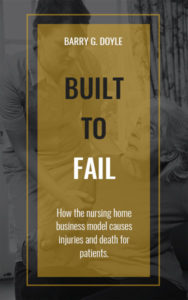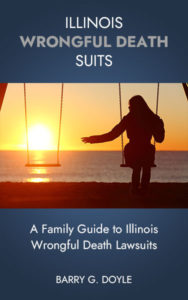The Illinois Department of Health has cited and fined Caseyville Nursing & Rehab Center when a high-risk resident suffered two serious falls within weeks of each other, including one that resulted in a compound ankle fracture requiring hospitalization. Despite the resident’s documented history of falls and multiple risk factors, facility staff removed essential safety interventions and expressed dismissive attitudes, with the Director of Nursing calling the resident “our problem child” and questioning why safety interventions should be used, as they no longer apply.
The resident in question had been living at the facility for over four years with serious medical conditions including a displaced fracture of her right tibia, chronic obstructive pulmonary disease, acute and chronic respiratory failure, and chronic kidney disease. Her assessment showed she was “moderately cognitively impaired” and required “partial to moderate assist with lying to sitting and sitting to standing.”
The facility had extensively documented the resident’s fall risk. Her care plan identified her as being “at risk for falls related to diagnosis of Chronic Obstructive Pulmonary Disease, Heart Failure, repeated infections, Weakness, Gout, Respiratory Failure, Pain, Obesity, difficulty walking, Rheumatoid Arthritis, visual disturbance, need for assistance with activities of daily living, psychotropic medication use, narcotic medication use, as needed oxygen use, history of falls.” The plan also noted concerning behaviors: she “frequently chooses to sit edge of bed with legs dependent despite education, overestimates limits, declines to use call light at times.”
The facility’s fall risk assessments consistently rated the resident as being at “high risk for falls.” In response to this risk, various safety interventions had been implemented over time, including “anti-slip tape,” a “sign placed in the resident’s room to remind/encourage to call for assist,” and “nonskid to edge of mattress.”
The first serious incident occurred in May when the resident’s “bed alarm heard alerting” and staff found her “on the floor at bedside facing door.” She had sustained a “skin tear noted to left shin” with a “moderate amount of blood noted.” The resident was “unable to state what happened” and “unable to state if she hit head.” Due to her history of taking warfarin, a blood thinner, emergency medical services were called and she was transported to the hospital for evaluation and treatment of a laceration to her left shin.
Following this incident, the facility completed an investigation stating that “appropriate interventions will be put into place and the resident’s plan of care will be updated accordingly.” However, just weeks later, a second and more serious fall occurred.
In the second incident, a registered nurse was “notified by Certified Nursing Assistant that the resident was found lying on the floor next to her bed.” There was a “large amount of blood found pooled under her right lower extremity” and “upon physical assessment, she has a large laceration to the right outer ankle that continues to have active bleeding.” The nurse applied pressure dressings and “held site and controlled bleeding” before emergency medical services transported her to the hospital.
Hospital X-rays revealed devastating injuries: a “comminuted fracture of the distal tibial and fibular metaphysis” and a “small posterior malleolar fracture.” The facility’s investigation noted this was an “open fracture of right ankle” and that “the resident is still in the hospital.” The root cause analysis found that the resident’s bed was noted to be “in highest position” during the fall and identified the “root cause” as “failing to call for assistance.”
Most troubling was what investigators discovered when they visited the resident’s room after the second fall. They found “no call for assist signage posted, no nonskid tape on floor, no nonskid on bedside, and no mat on floor.” The floor mat was “folded up on shelf” rather than being deployed for safety. A nursing assistant explained that the resident “moved into this room about a month ago” and “I think her bed was just changed so the blue piece for sliding is not on the bed. The mat is usually down too.”
The facility’s leadership showed concerning attitudes toward the resident’s care. The Director of Nursing stated that “the resident is our problem child. She refuses to use the call light and ask for help. What else are we supposed to do?” When questioned about the missing safety interventions, the Director responded “None of those interventions apply anymore, so why use them?” The Assistant Director of Nursing claimed “We have all the interventions in place. There’s not much else we can do,” despite clear evidence that safety measures had been removed.
A Certified Nursing Assistant Supervisor acknowledged awareness of the resident’s dangerous behaviors, stating “The last fall the resident had she put her bed up in the air. I tried to tell the staff the resident would do that but with new staff coming in, not everyone knew.” The facility’s Nurse Practitioner provided insight into the resident’s condition, explaining that she “takes her oxygen off a lot and gets hypoxic” and “these are the times she tries to get up and gets hurt.”
When interviewed about the incidents, the resident could only say “I slipped in my room.” During one investigation, she had stated “her legs were restless and she needed to get out of bed,” indicating the ongoing challenges she faced with her medical conditions and mobility limitations.
The case reveals a pattern of inadequate care where a vulnerable resident with documented high fall risk was left without proper safety measures, leading to preventable injuries that required hospitalization and caused significant pain and trauma.
One of our core beliefs is that nursing homes are built to fail due to the business model they follow and that unnecessary accidental injuries and wrongful deaths of nursing home residents are the inevitable result. Our experienced Chicago nursing home lawyers are ready to help you understand what happened, why, and what your rights are. Contact us to get the help you need.


